Sovietų Sąjungos karinės bazės Latvijoje
IV Sovietų okupacija
Latvijoje iš viso buvo dislokuota apie 400 sovietų kariuomenės vienetų, esančių maždaug 500 objektų, taigi iš viso buvo daugiau nei 50 000 karių.
Daugiau informacijos šaltinių
Knyga „Latvija – valdant sovietų kariuomenei“
Latvijos okupacijos tyrimų draugija (LOIB) išleido trijų autorių bendrą darbą – „Latvija sovietų karinio valdymo laikotarpiu, 1939–1999 m.“.
Knygoje pasakojama, kaip vyko Latvijos okupacija, kaip Latvijos teritorijoje buvo dislokuoti sovietų armijos daliniai, kaip Latviją užtvindė sovietų karinės bazės ir kokius nuostolius okupacija padarė Latvijos ekonomikai ir ekologijai.
Autoriai aiškina okupacijos teisinius aspektus ir kaip apskaičiuoti Latvijai sovietinės okupacijos metu padarytus nuostolius. Leidinys papildytas Latvijos žemėlapiu, kuriame pažymėtos didžiausių sovietinių karinių bazių vietos Latvijos teritorijoje.
Knyga „Latvijos-SSRS karinė bazė. 1938–1998 m.: medžiaga ir dokumentai apie sovietų armijos buvimą Latvijoje ir jos išvedimą“
Knygoje surinkta medžiaga ir dokumentai apie SSRS kariuomenės dislokavimą ir buvimą bei ginkluotę Latvijoje nuo 1939 iki 1998 m., kai nustojo veikti paskutinis Rusijos Federacijos karinis objektas Latvijos Respublikoje – Skrundos radiolokacinė stotis „Dniepr“. Autoriai buvo glaudžiai susiję su sovietų kariuomenės išvedimo procesu, todėl gali pateikti informaciją iš tiesioginių šaltinių. Pavyzdžiui, Ilgonis Upmalis buvo Rusijos Federacijos jurisdikcijai priklausančio Ginkluotųjų pajėgų išvedimo kontrolės biuro vadovas, o Latvijos delegacijai tarpvalstybinėse derybose vadovavo Latvijos parlamento deputatas ir valstybės ministras J. Dinevičs. Pateikdami įžvalgų apie sovietų kariuomenės atvykimą į Latviją ir jos buvimą čia, autoriai išsamiau nagrinėja Rusijos kariuomenės, buvusios SSRS kariuomenės įpėdinės, išvedimo procesą. Knygoje publikuojama daug dokumentų ir jų faksimilių, nuotraukų, gausi iliustracinė medžiaga, taip pat asmenų rodyklė.
Jūsų komentarai
Mielas Krisai, ačiū už komentarą. Vertimuose buvo klaida, kurią ištaisėme. Pagarbiai „Lauku keliautojs“
Susijusi laiko juosta
Susijusios vietos
Sovietų armijos miestelis Mežgarcieme
Buvęs sovietinės armijos miestelis yra Mežgarciems mieste, Adažių savivaldybėje, netoli P1 greitkelio. Tai buvo nedidelis miestelis, kuriame gyveno sovietinės armijos oro gynybos daliniai ir kuris buvo naudojamas kaip karinė mokymo bazė. Šalia miestelio pastatyti informaciniai stendai. Buvusios armijos bazės teritorija yra prieinama lankytojams. Mežgarciemso sovietinės okupacijos metu žemėlapiuose nebuvo. Ir nebuvo nieko, kas leistų manyti, kad čia buvo nedidelis miestelis, pastatytas sovietinei kariuomenei su oro gynybos pajėgumais. Po Antrojo pasaulinio karo Latvijos teritorijoje sparčiai pradėta statyti sovietinės armijos stotis. O šios armijos bazės buvo tarsi atskiros valstybės šalies viduje. Kariniai daliniai buvo beveik kiekvienoje Latvijos vietoje. Ypač privilegijuota visuomenės dalis buvo SSRS atsargos kariškiai ir jų šeimos, kuriems prioriteto tvarka buvo suteikta gyvenamoji erdvė. Daugelis rinkosi Latvijos miestus, nes gyvenimo lygis čia buvo aukštesnis nei kitur Sovietų Sąjungoje. Sovietinės armijos buvimui Latvijoje buvo būdingas nusikalstamas elgesys, imperialistinis požiūris ir nebaudžiamumas, rodantys abejingą režimo požiūrį į Latviją ir jos žmones. O kruopščiai puoselėjamas mitas apie laimingą gyvenimą sovietinėje Latvijoje ir sovietų armiją kaip išvaduotoją iš tikrųjų buvo tarsi gyvenimas ant parako statinės.
Sovietų armijos karinė bazė Paviluostoje – aktyvaus poilsio centras
Sovietmečiu čia buvo dislokuotas pasienio apsaugos dalinys, už kelių kilometrų miške buvo įsikūrę kiti sovietų armijos daliniai – ryšių karininkai ir žemė-oras raketų bazė. Atkūrus nepriklausomybę, čia buvo dislokuota Latvijos kariuomenė.
Buvusi sovietinės armijos karinė bazė dabar yra poilsio, laisvalaikio ir stovyklavimo centras – asmeniniam tobulėjimui, sąveikaujant su gamta ir aplinkiniais žmonėmis.
Poilsio ir apgyvendinimo vieta tiek turistinėms grupėms, tiek šeimoms. Kambariai, dušai, WC, laužavietės, erdvi erdvė pramogoms, gamtos garsai. Rezervuokite iš anksto telefonu +371 26314505.
Akmeņrago švyturys ir „Saratovo“ likimas
Akmeņrago švyturys yra Sakos valsčiuje, 10 kilometrų į pietvakarius nuo Paviluostos. Į švyturio viršūnę galima patekti spiraliniais laiptais, iš jos atsiveria vaizdas į jūrą ir aplinkinius miškus. Dabartinis 37 metrų aukščio švyturio bokštas buvo pastatytas 1921 m., o ankstesnis švyturys buvo sunaikintas per Pirmąjį pasaulinį karą.
Akmeņrago švyturys išsiskiria iš kitų Latvijos švyturių, nes yra vienoje pavojingiausių laivybai vietų visoje Baltijos jūros pakrantėje. Švyturio signalinis spindulys žymi uolėtą krantą, kuris šiaurės vakarų kryptimi tęsiasi maždaug dvi jūrmyles arba 3,7 kilometro į jūrą. Kranto gylis yra kiek daugiau nei du metrai. Švyturio vieta nepakito, tačiau pakrantė bėgant metams tolsta. Nors navigacijos šviesa čia yra nuo 1879 m., Akmeņrage įvyko keletas laivų avarijų. Žymiausia įvyko 1923 m. rugsėjį, kai į seklumą atsitrenkė Latvijos garlaivis „Saratow“. 1919 m. Saratovas trumpai buvo Latvijos laikinosios vyriausybės būstinė. Akmeņrage anksčiau buvo pasienio apsaugos postas, čia galima apžiūrėti sovietų armijos pastatus.
Zvārdės šaudykla ir buvusi sovietų karinė bazė „Lapsas“
Poligono aptarnavimo bazė yra maždaug 2 kilometrus į rytus nuo Strikių dvaro, prie Saldus-Auce kelio. Į pietus nuo Saldus yra buvęs sovietų karinės aviacijos taikinių poligonas (karinis dalinys Nr. 15439) Zvārdėje. Aerodromo teritorijoje yra keletas lankytinų vietų – Zvārdės ir Ķerklinių bažnyčių griuvėsiai, sugriautos Rītelių kapinės, aerodromo stebėjimo postas, vadinamasis „Karininkų kurganas“ ir buvusi aerodromo personalo bazė bei šaudykla „Lapsas“.
Zvārdės oro taikinių poligonui aptarnauti – taikiniams įrengti, pažeidimams taisyti, oro taikinių poligonui saugoti ir oro skrydžiams koordinuoti – reikėjo maždaug vienos kuopos dalinio. Iki Antrojo pasaulinio karo jis buvo įsikūręs namo, vadinamo „Lapsas“, vietoje. Pastačius aerodromą, buvo pastatytos kareivinės, transporto depo, skrydžių valdymo bokštas ir šaudykla mokomajam personalui.
Latvijai atgavus nepriklausomybę, čia veikė Zvārdės gynybos pajėgų mokymo centras, tačiau nuo 2007 m. ši vieta priklauso savivaldybei, o ją nuomoja keli medžiotojų kolektyvai. Buvusiose kareivinėse įrengta ekspozicija apie Zvardės parapijos istoriją.
Olmano baterija Nr. 456 (sovietų karinė bazė „Krasnoflotska“)
Pirmosios pakrantės gynybos baterijos Irbės sąsiaurio gynybai buvo pastatytos po 1912 m., kai buvo patvirtintas Baltijos laivyno minų ir artilerijos gynybos pozicijų planas, kuriame buvo numatytos kelios pakrantės gynybos baterijos ir jūros minų statymas.
Irbės sąsiaurio pozicija buvo toliausiai į pietus, o jos užduotis buvo užblokuoti bet kokį priešo patekimą į Rygos įlanką. Pagrindinis dėmesys buvo skiriamas jūrinėms minoms, kurių dešimtys tūkstančių buvo padėti Irbės sąsiauryje Pirmojo pasaulinio karo metu Baltijos laivyno laivai. Tik 1916 m. Saremos salos pietiniame gale, Sorvės kyšulyje, pradėtos statyti pakrantės gynybos baterijos. Iš viso buvo pastatytos septynios baterijos, o 43-ioji baterija buvo aprūpinta 305 mm pabūklais. Latvijos Irbės sąsiaurio pakrantėje gynybos baterijų nebuvo pastatyta.
Net ir įkūrus Latvijos Respubliką, Latvijos armija ir karinis jūrų laivynas neįrengė artilerijos pozicijų Irbės sąsiauriui ginti.
Padėtis pasikeitė po 1939 m. spalio 5 d. Latvijos Respublikos ir SSRS savitarpio pagalbos pakto, kuris numatė Raudonosios armijos ir Baltijos karinio jūrų laivyno kontingento dislokavimą Kuržemėje. Sovietų Sąjungos planuose taip pat buvo numatyta sukurti pakrantės gynybos sistemą pagal 1912 m. planą su patobulinimais. Buvo numatyta pastatyti pakrantės gynybos baterijas Liepojos tvirtovės vietoje, naujas baterijas į pietus nuo Ventspilio (46-oji baterija) ir dvi baterijas siauriausioje Irbės sąsiaurio dalyje netoli Mikeltornio. Jau po Latvijos okupacijos ir aneksijos Baltijos karinio jūrų laivyno pakrantės gynybos planai buvo papildyti ir iki 1941 m. birželio mėn. buvo planuojama įkurti 207-ąją artilerijos diviziją su penkiomis baterijomis šiaurinėje Kuržemės dalyje. Mikeltornio apylinkėse turėjo būti įrengtos dvi baterijos – 40-oji baterija Lūžnoje su 130 mm B-13 pabūklais gelžbetoniniuose įtvirtinimuose ir 117-oji baterija Olmaniuose (vieta Latvijos armijos žemėlapiuose pažymėta Ķesteriais) su 152 mm MU-2 pabūklais. Kadangi 152 mm pabūklų kūrimas nebuvo baigtas, ant baterijos gelžbetoninių įtvirtinimų buvo pastatytos laikinos medinės platformos ir sumontuoti dar keturi 130 mm pabūklai. Abi baterijos buvo baigtos iki 1941 m. birželio mėn., tačiau kare prieš vokiečių 291-ąją pėstininkų diviziją baterijų nepavyko aptikti, todėl jų įgulos persikėlė į Saremos salą.
Antrojo pasaulinio karo pabaigoje Vokietijos armijų grupė „Kuršas“ gana rimtai svarstė galimus sovietų išsilaipinimus šiaurinėje Kuršo dalyje, ypač ištirpus ledui Suomijos įlankoje ir vakarinėje Estijos pakrantėje. Visoje Kuršo pakrantėje buvo dislokuotos savadarbės pakrantės gynybos baterijos. Sovietų Sąjungos 40-oji baterija „Gerate Batterie Sommer“, priklausanti 289-ajai artilerijos divizijai, su dviem 122 mm sovietinėmis haubicomis, buvo dislokuota gelžbetoninėse pozicijose netoli Lužnės. 117-osios baterijos pozicijų rajone buvo 530-osios artilerijos divizijos 2-oji baterija su trimis 152 mm sovietinėmis trofėjinėmis patrankomis, trimis 37 mm zenitiniais dronais, vienu 20 mm keturių vamzdžių zenitiniu dronu, dviem 75 mm prieštankinėmis patrankomis ir dviem minosvaidžiais apšvietimui.
Pasibaigus aktyviems karo veiksmams 1945 m. gegužę, SSRS pradėjo atkurti pakrantės gynybos sistemą Kuržemės pakrantėje. 1945 m. rudenį netoli Olmanių ūkio, kuris buvo pervadintas į „Krasnoflotskaja“, buvo dislokuota laikina 456-oji baterija su 152 mm Kane sistemos pabūklais.
1952 m. laikini baterijos pabūklai buvo pakeisti naujausiais 152 mm MU-2 ginklų sistemomis. Bateriją sudarė keturios gelžbetoninės pabūklų pozicijos, gelžbetoninis vadovavimo postas su tolimačio bokšteliu ir techniniai pastatai. Baterijos statyba buvo baigta 1958 m.
1958 m., išmontavus Lūžnios pakrantės gynybos bateriją, ją pakeitė mobili 130 mm SM-4-1 patrankų baterija Nr. 343. Mobiliosios patrankos neturėjo gelžbetoninių patrankų lizdų, tačiau buvo pastatytos kelios rąstų ir smėlio konstrukcijos.
343 baterija veikė iki septintojo dešimtmečio pradžios, o 456 baterija – iki 1975 m., kai buvo išsaugota. Baterijų pozicijose buvo dislokuoti S-125 oro gynybos raketų kompleksai, taip pat 10-asis pakrantės gynybos artilerijos-raketų pulkas su CP-2 „Sopka“ raketų kompleksais, o infrastruktūra buvo atitinkamai modifikuota.
Sovietų armija Olmanių ir Lūžnių baterijų infrastruktūrą Latvijos Respublikai perdavė 1993 m.
Sovietų Sąjungos pasienio apsaugos postas Jūrmalciems
Po Antrojo pasaulinio karo Latvijoje galiojo įvairūs draudimai pasienio ir pakrantės zonose. Nuo 1945 m. birželio 19 d. žvejams buvo paskirtos prieplaukos, aptvertos spygliuota viela, saugomos patrulių ir stebėjimo bokštų. 1946 m. rugsėjo 4 d. buvo įvestos draudžiamos pakrančių apsaugos zonos vakarinėje LTSR sienoje.
Jūrmalcų kaime yra buvęs pasienio kontrolės postas, bokštas ir paplūdimyje išdidžiai siūbuojantis traktorius! Kaip jis ten atsidūrė, verta paklausti vietinių gidų!
Pasakiškai graži ir įdomi vieta – ir su sovietmečio aura, ir su pajūrio žavesiu.
Buvusi sovietų armijos raketų bazė „Raketnieki“
Buvusios sovietinės armijos bazės pastatai yra apgriuvusios būklės, tačiau toje vietoje yra automobilių trasa. Vietovę galima apžiūrėti pėsčiomis, tačiau reikalinga gera avalynė, apsauganti nuo purvo ir smėlio.
Salacgryvos pasienio apsaugos sargybos bokštas
Įsikūręs Salacgryvoje, šiaurės rytų kryptimi, 1 km nuo tilto per Salacos upę.
Sovietų armijos karinė bazė Salacgryvoje yra viena iš buvusių okupacinių pajėgų dislokacijos vietų. Salacgryvoje buvo dislokuotas oro gynybos dalinys. Jis buvo palyginti mažas ir tapo pirmuoju kariniu daliniu, 1992 m. palikusiu Latviją. Tuo metu Latvijoje vyko didelio masto plėšikavimas, kai Latvijos valstybė pasidavė Rusijos reikalavimams, kad okupacinė armija kuo greičiau paliktų teritoriją.
Po Antrojo pasaulinio karo Latvijos teritorijoje tęsėsi sparti ir ambicinga sovietų armijos karinių objektų statyba. Karinės bazės buvo tarsi valstybė valstybėje. Manoma, kad okupuota Latvija tapo labiausiai militarizuota vieta pasaulyje ir karo atveju būtų visiškai sunaikinta. Kriminaliniai nusikaltimai, imperinis požiūris ir atlaidumas ryškiausiai apibūdino sovietų armijos buvimą Latvijoje. Kruopščiai puoselėjamas mitas apie „laimingą gyvenimą sovietų Latvijoje“ ir sovietų armiją kaip „išvaduotoją“ iš tikrųjų buvo „gyvenimas ant parako statinės“. Atkūrus Latvijos nepriklausomybę, užsienio armija iš Latvijos pasitraukė tik 1994 m., tačiau dešimtys tūkstančių į pensiją išėjusių sovietų kariškių ir jų šeimų liko Latvijoje.
Šiandien galite aplankyti bazinę teritoriją.
Sovietų armijos raketų bazė Zeltiniuose
Buvusi sovietų armijos raketų bazė yra Medņukalnuose, Zeltinių valsčiuje, Alūksnės savivaldybėje. Ši branduolinių raketų bazė buvo ypač slaptas sovietų armijos karinis objektas, veikė Zeltiniuose, Alūksnės savivaldybėje, nuo 1961 iki 1989 m. Objekte buvo dislokuotos vidutinio nuotolio balistinės raketos P-12 (8K63) ir P12Y (8K63Y) su 4 paleidimo aikštelėmis. Jų skrydžio atstumas buvo 2200 kilometrų. Šiuo laikotarpiu armija spygliuota viela saugojo apie 300 ha plotą, esantį mažiau nei kilometro atstumu nuo nacionalinio regioninio greitkelio Sinole-Silakrogs P34. Gyvosios ir itin slaptos zonos išliko iki šių dienų. Betoniniai keliai veda į tuo metu nuo akių paslėptas vietas: angarus, paleidimo aikšteles ir slėptuves nuo bombų. Dešimčių hektarų plote išsidėstę įvairūs branduolinių raketų priežiūros ir aptarnavimo statiniai. Įrenginiai, tiekę autonominį elektros energijos, vandens ir šilumos tiekimą teritorijai, buvo sunaikinti pasitraukus kariuomenei. Kariuomenei pasitraukus, dalis įrangos buvo perduota vietos savivaldybei. Šiuo metu lankytojai gali apžiūrėti 20 ha buvusios raketinės bazės teritorijos, kurios pietvakarinė dalis yra turistų traukos objektas. Bazę aplankę turistai gali rinktis iš pagrindinės ekspozicijos apie raketinės bazės istoriją, esančios Zeltinių muziejuje, arba turistinio maršruto bazės teritorijoje. Draugų grupės iki 12 žmonių čia gali žaisti lazerinį žaidimą.
Slaptas sovietinis bunkeris Lygatnėje
Įsikūręs Lygatnės valsčiuje, Cėsių savivaldybėje, sovietinis slaptasis bunkeris yra 9 metrus žemiau Lygatnės reabilitacijos centro pastato ir gretimos teritorijos. Bunkeris atviras lankytojams ir siūlo ekskursijas su gidu, maitinimą bunkerio valgykloje, sovietinio stiliaus vakarėlius ir realybės žaidimą „Objektas X“. Bunkerio paskirtis buvo sudaryti minimalias būtinas sąlygas ilgalaikiam darbui Latvijos SSR Ministrų Tarybai, LTSR Komunistų tarybos vadovybei ir LTSR valstybinio planavimo komiteto vadovybei branduolinio karo grėsmės atveju. 2000 kvadratinių metrų ploto požeminis bunkeris buvo tvirčiausias autonominis statinys su visa reikalinga ir moderniausia tuo metu įranga, taip pat vienas strategiškai svarbiausių objektų sovietmečio Latvijoje branduolinio karo atveju. Teritorijoje yra saugoma požeminė darbo vieta (slėptuvė), sanatorijos tipo miegamasis blokas 250 žmonių, apsaugos patalpos ir 24 butų gyvenamasis namas aptarnaujančiam personalui. Visa autentiška požeminė įranga ir planai yra išsaugoti iki šių dienų. Svarbiausi objektai – autonominė elektrinė su dyzeliniais generatoriais ir kuro saugykla, oro valymo įranga su deguonies atsargomis, povandeninio laivo principu veikianti vandens tiekimo ir nuotekų sistema, telekomunikacijų įrenginys, galintis užtikrinti tiesioginį ryšį su Maskvos Kremliumi ir autonominį ryšį su visomis pagrindinėmis šalies tarnybomis, unikalus žemėlapis su istoriniais kolūkių pavadinimais, autentiška valgykla su tipiškais sovietmečio patiekalais, taip pat įvairūs sovietmečio atributai ir namų apyvokos daiktai.
Sovietų armijos apžvalgos bokštas (Karininkų kurganas)
„Karininkų kurganas“ yra mažiau nei už kilometro nuo Zvārdės bažnyčios griuvėsių. Kurganas sudarytas iš aplinkinių namų ir dvaro rūmų griuvėsių ir liekanų, kurios buvo suverstos buldozeriais. Ant kurgano pastatytas stebėjimo bokštas. Remiantis užrašu, dabartinis bokštas buvo pastatytas 1981 m. Bokštas buvo naudojamas bombų pataikymams registruoti. Mokomosiose bombose buvo sumažintas sprogstamosios medžiagos kiekis, todėl jų pataikymus reikėjo stebėti atidžiau. Nesprogusios bombos buvo nedelsiant neutralizuotos, tačiau ne visas pavyko rasti.
Šiandien čia galima pamatyti bokšto liekanas – plytų sienas. Kadangi užtvanka yra gana aukšta, giedrą dieną Mažeikiuose galima pamatyti net Lietuvos naftos perdirbimo gamyklą.
Sovietų armijos automobilių kolekcija
Edgaras Kārklevalkas Dundagos rajone valdo svečių namus „Pūpoli“ ir jau daugiau nei 15 metų savo restauruotu sovietinės armijos sunkvežimiu GAZ-66 (iki 24 asmenų) ir UAZ-3151 (iki 6 asmenų) veda žmones į istorines ir edukacines keliones po šiaurinę Kuržemę (įskaitant buvusias karines teritorijas). Sovietinės armijos sunkvežimiai ir kita įranga eksponuojami aplink svečių namus esančioje teritorijoje.
Buvęs sovietinės pasienio apsaugos stebėjimo bokštas Paviluostoje
Sovietinis pasienio apsaugos apžvalgos bokštas yra netoli Pietinio molo Paviluostoje. Buvęs sovietinis pasienio apsaugos apžvalgos bokštas, kuris buvo nenaudojamas nuo XX a. dešimtojo dešimtmečio pradžios, dabar tarnauja kaip apžvalgos aikštelė su 360 laipsnių kampu besisukančiu sausumos teleskopu. Iš jo atsiveria gražūs jūros ir laivų vaizdai, jį galima naudoti paukščių stebėjimui. Lipti į bokštą leidžiama tik vasaros sezonu dienos šviesoje. Kadangi bokšto laiptai yra gana statūs, lankytojai turėtų įvertinti savo sugebėjimus, sveikatą ir susijusią riziką. Apžvalgos bokštas ir apylinkės stebimos vaizdo kameromis. Žiemos sezonu bokštas lankytojams uždarytas.
Paviluosto vietos istorijos muziejaus ekspozicija
Paviluostos kraštotyros muziejuje veikianti paroda, pavadinta „Paviluosta, uždara teritorija“, pasakoja apie kasdienį gyvenimą Paviluostos mieste sovietinės okupacijos metu; konkrečiai apie vykdomąją valdžią, pasienio zoną, žvejų kolūkį, kultūrinę ir socialinę veiklą. Be nuolatinės ekspozicijos, yra interaktyvi ir emociškai turtinga skaitmeninė ekspozicija dviem kalbomis bei audiovizualinė instaliacija, kurioje rodomas filmas apie Paviluostą.
Muziejuje taip pat atidaryta nauja paroda pavadinimu „Paviluostos auksiniai smėlio grūdeliai“. Skaitmeninėje instaliacijoje pristatomi seni įvykiai, Paviluostos įkūrimo istorija ir svarbiausi įvykiai nuo 1918 m. iki šių dienų. Karinis paveldas yra pagrindinis Nepriklausomybės karo skyriaus, kuriame pasakojama apie Latvijos laisvės kovotojus ir sovietinės okupacijos laikotarpį, akcentas.
Adamo plieno mokykla
Mokyklos pastatas yra miesto centre, kairėje Ausekļa gatvės pusėje, šalia Valkos Janio Cimzės gimnazijos.
Pastatas, pavadintas mokytojo Adamo Tēraudo vardu, iš pradžių buvo mokykla, o jo statyba buvo baigta 1923 m. 1946 m. čia buvo įsikūręs armijos garnizono karinis štabas. Taip Valkos miesto centre buvo įkurtas karinis centras, o Valka tapo svarbiu SSRS armijos branduolinių ginklų objektu. Pastato teritorija buvo aptverta aukšta tvora ir vadinama miestu mieste, nes turėjo savo parduotuvę, ligoninę, katilinę ir net kavinę armijos poreikiams. Ant pastato stogo buvo uždėta sovietinės valdžios simbolika – raudona žvaigždė. Armija paliko šią vietą devintojo dešimtmečio pabaigoje, pasiimdama viską, ką galėjo panešti.
Šalia, už Adamo Plieno mokyklos ir požeminių bunkerių, yra Švedų (Šeremetjevo) pylimas. Dirbtinai sukurtas žemių pylimas buvo pastatytas Šiaurės karo pradžioje, apie 1702 m., siekiant apsaugoti Valką nuo švedų. Stačiausia pylimo siena yra nukreipta į Ērgemi, o kita pusė – į Auseklės gatvę.
Šiandien Adamo Steelo mokyklą galima apžiūrėti tik iš išorės.
Požeminiai bunkeriai Valkoje
Valkos bunkeriai yra Valkos miesto centre, kairėje Ausekļa gatvės pusėje, šalia Adamo Tēraudo mokyklos. Lankytojai bunkerius gali apžiūrėti tik iš išorės. Sovietų armijos bunkeriai Valkoje buvo vienos slapčiausių vietų Sovietų Latvijoje, prieinamos tik asmenims su specialiais leidimais. Nuo 1953 iki 1989 m. juose buvo įsikūręs Sovietų armijos strateginių raketų ryšių rezervas. Dideliais šešiolikračiais sunkvežimiais buvo pristatomi masyvūs gelžbetonio blokai bunkerių statybai. Baigus statyti, visi trys bunkeriai buvo uždengti žvyru, kad būtų galima papildomai sutvirtinti ir izoliuoti. Bunkeriuose buvo įsikūręs strateginių raketų ryšių rezervas, pavaldus Leningrado ryšių centrui. Iš šių bunkerių buvo valdomi silosai su armijos raketomis. Valkos ir Valgos apylinkėse buvo 20 tokių silosų. 1962 m. spalį, per Kubos raketų krizę, šios raketos buvo paruoštos kovai ir nukreiptos į Floridą. Pasak legendos, likus porai valandų iki paleidimo, jos buvo paleistos. Šalia Adamo Tēraudo mokyklos ir požeminių bunkerių yra Švedų (Šeremetjevo) įtvirtinimas. Dirbtinė žemių siena buvo pastatyta Šiaurės karo pradžioje, apie 1702 m., siekiant apsaugoti Valką nuo švedų. Stačiausia įtvirtinimo siena yra nukreipta į Ērgemės kaimą, o kita pusė – į Auseklės gatvę.
Paviluosto vietos istorijos muziejaus ekspozicija
Paviluostos kraštotyros muziejuje veikianti paroda, pavadinta „Paviluosta, uždara teritorija“, pasakoja apie kasdienį gyvenimą Paviluostos mieste sovietinės okupacijos metu; konkrečiai apie vykdomąją valdžią, pasienio zoną, žvejų kolūkį, kultūrinę ir socialinę veiklą. Be nuolatinės ekspozicijos, yra interaktyvi ir emociškai turtinga skaitmeninė ekspozicija dviem kalbomis bei audiovizualinė instaliacija, kurioje rodomas filmas apie Paviluostą.
Muziejuje taip pat atidaryta nauja paroda pavadinimu „Paviluostos auksiniai smėlio grūdeliai“. Skaitmeninėje instaliacijoje pristatomi seni įvykiai, Paviluostos įkūrimo istorija ir svarbiausi įvykiai nuo 1918 m. iki šių dienų. Karinis paveldas yra pagrindinis Nepriklausomybės karo skyriaus, kuriame pasakojama apie Latvijos laisvės kovotojus ir sovietinės okupacijos laikotarpį, akcentas.
Privati karinių daiktų ir siuvimo mašinų kolekcija
Vienintelė Latvijoje siuvimo mašinų kolekcija, kurioje yra daugiau nei 200 skirtingų siuvimo mašinų iš ikikario ir sovietmečio laikotarpio, kurios atliko tiesioginį vaidmenį karinės aprangos gamyboje ikikario ir karo metais. Kolekcijos kūrėjas - Juris Beloivans.
Vainodės oro bazė
Vainodės aerodrome vis dar yra 16 sovietmečio orlaivių angarų ir 1800 m ilgio kadaise 2500 m ilgio tako atkarpa. Aerodromą galima aplankyti tik iš anksto užsiregistravus. Vainodės aerodromas buvo įkurtas Latvijos nepriklausomybės metais kaip vienas iš Latvijos aviacijos lopšių, o vėliau tapo vienu didžiausių karinių aerodromų Baltijos šalyse. 1916 m. buvo pastatyti du angarai Vokietijos armijos dirižabliams. Dirižabliai buvo naudojami žvalgybai rinkti ir Rusijos armijos pozicijoms bombarduoti. Vėliau Rygos miestas įsigijo dirižablių angarus ir panaudojo jų stogo konstrukcijas Rygos centrinio turgaus paviljonams pastatyti. 1940 m. gegužę į Vainodę persikėlė 31-asis Raudonosios armijos greitųjų bombonešių aviacijos pulkas ir pradėta standartizuoto betoninių plokščių tako statyba. 1944 m. vasaros pabaigoje nebaigtu aerodromu naudojosi įvairūs vokiečių aviacijos daliniai, tačiau Antrojo pasaulinio karo pabaigoje tą patį aerodromą naudojo Raudonosios armijos aviacijos daliniai, kovoję su vokiečių armijos grupuote „Kurzeme“. Po Antrojo pasaulinio karo Sovietų Sąjungos oro pajėgos Vainiodėje buvo dislokuotos iki 1992 m.
Nygrande dvaro tvartas
Nygrandės kraštotyros saugykla yra Nygrandės kaime, dvaro tvarte, šalia Nygrandės pradinės mokyklos, ir yra prieinama iš anksto susitarus.
Saugyklos karo istorijos skyriuje įrengta paroda apie Antrąjį pasaulinį karą ir originalius daiktus bei dalis, rastus šioje vietovėje po karo ir vėlesniais metais. Taip pat galite sužinoti pasakojimų ir pamatyti nuotraukų apie Nygrande ir jos apylinkes iš Nepriklausomybės karo, Antrojo pasaulinio karo ir pokario laikotarpio, taip pat apie gyvenimą kolūkyje sovietmečiu.
Parodoje ypatinga vieta skirta vietos rašytojui Jėkabui Janševskiui ir jo kūrybai, taip pat veikia paroda, kurioje pristatomas tradicinis dvaro gyvenimas ir baldai. Nygrandės dvaro tvarte taip pat eksponuojama mamuto iltis, rasta Nygrandės mieste.
Nuomininko kalva
Įsikūręs Rygoje, Spilvėje, aukščiausiame Nordeķu - Kalnciema kopagūbrio taške - Kleistu miško rytinėje dalyje, netoli Dzirciema gatvės. Sovietmečiu čia veikė du (vėliau vienas) P-35 radarai, kurie sukosi aplink savo ašį. Tuo metu apylinkių gyventojai šią vietą praminė „Lokatoru kalniņu“. Netoli jos, devintajame dešimtmetyje, vyko Rygos 58-osios vidurinės mokyklos (dabar - Iļģuciemo vidurinė mokykla) sporto pamokos ir varžybos. Gelžbetoniniai pamatai, ant kurių buvo įrengti lokatoriai, išliko iki šių dienų. Į šiaurę nuo „Lokatoru kalniņu“ buvo sovietų armijos kiaulių ferma, į rytus - Spilvės oro uostas.
Skrundos dvaras ir Skrundos lokatoriaus ekspozicija
Skrundos dvare įrengta ekspozicija apie Skrundos radarą (Skrundos radijo lokacijos stotį) ir Latvijos liaudies fronto veiklą Skrundoje. Skrundos radijo lokacijos stotis, pravarde „Kombināts“ (Gamykla), buvo SSRS raketų ankstyvojo perspėjimo sistema vakariniame sektoriuje. Vietovė „Skrunda-2“ buvo specialus miestas (V/ч 18951), įkurtas 5 km nuo Skrundos Kuldygos kryptimi SSRS kariuomenės reikmėms. Iš čia veikė radaro stotis „Dnepr“ ir buvo statoma nauja, modernesnė stotis „Darjal“. Statybos buvo sustabdytos, o radaro stotis „Darjal“ susprogdinta 1995 m. gegužės 4 d. Laikantis tarptautinio susitarimo, radaro stotis „Dniepras“ buvo uždaryta 1998 m. rugpjūčio 31 d.
Mērsrago švyturys ir buvęs pasienio sargybinis
Mērsrago švyturys yra Mērsrago kaime, apie 1 km į šiaurę nuo kaimo centro. Švyturys buvo pradėtas eksploatuoti 1875 m. Tai 18,5 m aukščio laisvai stovintis, cilindro formos, kniedėmis sutvirtintas geležinis bokštas, kurio apatinė dalis sustiprinta gelžbetoniniais kontraforsais. Signalinio žibinto aukštis – 21,3 m. Viršuje aplink bokštą yra geležinis balkonas, paremtas konsolėmis. Švyturio bokštą pagamino „Sotera, Lemonier & Co“ Paryžiuje, todėl šis švyturys dažnai vadinamas „prancūziškuoju“. 1944 m. pabaigoje šalia švyturio buvo dislokuota Vokietijos armijos 1003-ioji artilerijos divizijos baterija su 60 cm prožektoriais. 1945 m. gegužę nacistinės Vokietijos vyriausioji vadovybė planavo perkelti į šią vietovę 15-ąją Latvijos SS grenadierių diviziją, tačiau šie planai žlugo, nes Latvijos kareiviai pasidavė Vakarų sąjungininkams. Netoli Mērsrago švyturio išlikę pastato, kuriame SSRS laikais sovietų pasieniečiai turėjo didelį, ištraukiamą prožektorių jūrai apšviesti, liekanos. Šalia švyturio yra paukščių stebėjimo bokštelis. Ekskursijas reikia užsisakyti iš anksto susisiekus su Mērsrago turizmo informacijos centru.
Mazirbės pasienio apsaugos bokštas
Sovietinis pasienio apsaugos postas buvo įsikūręs pastate, kuriame anksčiau buvo jūreivystės mokykla, o šalia jo yra gerai išsilaikęs sovietinis pasienio sargybos bokštas. Antrasis sargybos bokštas yra tiesiai ant kranto, šalia automobilių stovėjimo aikštelės. Šie sargybos bokštai primena sovietų okupaciją ir laikus, kai Mazirbė buvo uždara pasienio zona, o civiliai gyventojai krante buvo leidžiami tik specialiai tam skirtose vietose ir tik dienos metu. Šis pasienio sargybos bokštas yra vienas geriausiai išsilaikiusių tokio tipo objektų Latvijos pakrantėje. Tačiau į jį lipti pavojinga.
Oskaro Kalpako tiltas Karostoje
Oskaro Kalpakos vardu pavadintas tiltas yra Liepojos vartai į Karostą ir yra Oskaro Kalpakos ir Atmodos gatvių sankryžoje – kitoje Karostos kanalo pusėje.
Unikalus pasukamasis tiltas buvo atidarytas 1906 m. rugpjūčio 19 d. Tiltas buvo susprogdintas Pirmojo pasaulinio karo metu, tačiau po karo atstatytas. Tiltas buvo atstatytas po to, kai 1926 m. jį apgadino garlaivis „Narne“, tačiau jis nukentėjo ir Antrojo pasaulinio karo metu, kai įsiveržusi sovietų armija apšaudė Liepojos uostą. Iki Latvijos Respublikos nepriklausomybės atkūrimo Karosta buvo uždara Liepojos teritorija, neprieinama net Liepojos gyventojams. Visa Karosta buvo karinis objektas, todėl eismą per tiltą visą parą kontroliavo sargybos postai. Pereiti per tiltą į Karostą buvo galima tik gavus specialius leidimus kelias valandas per dieną, likusį laiką tiltas buvo atviras sovietinių karo laivų eismui. Visus okupacijos metus tiltas buvo vadinamas „Raudonosios armijos tiltu“. 2006 m. vasarą į šiaurinę tilto atramą įskrido tanklaivis su Gruzijos vėliava „Anna“, o po rekonstrukcijos Oskaro Kalpakos tiltas oficialiai atidarytas 2009 m. rugpjūtį.
Tiltas sveria 300 tonų ir susideda iš dviejų dalių (šiaurinės ir pietinės pusių), pagamintų iš dviejų identiškų konsolių. Tilto važiuojamosios dalies plotis yra 7,3 metro, o platforma – iš medinių lentų. Bendras tilto ilgis – 133 metrai, o tarpatramis – 27,55 metro + 77,9 metro + 27,55 metro. Tilto aukštis virš vandens lygio – 8,32 metro. Tiltas kertamas nustatytu laiku, ir, vadovaujantis Uosto saugos taisyklėmis, laivas gali pradėti eismą tik tada, kai tiltas yra atidarytas laivų eismui ir yra saugu įplaukti į Karostos kanalą arba išplaukti iš jo. Oskaro Kalpakos tiltas laivų eismui grąžinamas 5 kartus per dieną. Tiltas nustatytu laiku nekertamas, jei vėjo greitis viršija 10 m/s arba jei neplanuojami manevrai.
Jodinėjimas žirgais ir jojimo turai Paplakos ir Priekulės apylinkėse
Stiebrinių ūkio savininko siūlomos teminės ekskursijos arklių traukiamomis karietomis, pavyzdžiui, pasivažinėjimas geležinkelio pylimu, klausantis gido pasakojimo apie pramoninį paveldą, yra puikus nuotykis. Taip pat nepamirštama bus kelionė arklių traukiama karieta po buvusių karinių garnizonų/miestelių vietas aplink Paplaką. Ypač rekomenduojame sovietinės armijos gyvenamojo kvartalo vaikų žaidimų aikštelę, vietinių vadinamą „Disneilendu“, suomiškus namelius (Suomijos karo laikų įnašas Sovietų Sąjungai), vandens bokštus ir buvusių prabangių baronų fon Korfų pastatų griuvėsius.
23-iosios Kranto baterijos pirmasis tolimatis (1941 m.)
Tolimačiai (datuojami 1941 m.) yra kopos pušyse, vos už 10 m nuo kito bokšto, pastatyto 1954 m. Kranto baterijos 1-oji ir 2-oji patrankų pozicijos yra pajūryje ir iš dalies eroduotos, o 4-oji patrankų pozicija geriausiai matoma kopose. Pabūklus aptarnavusių personalo gelžbetoninis bunkeris dabar nuplautas bangų ir turi išplautus pamatus, pasvirusius ir pasvirusius į jūrą.
Liepojos tvirtovės 2-oji baterija buvo planuojama statyti toliau nuo kranto linijos ir apsaugoti aukštu pylimu. Baterijos ginkluotė turėjo būti 16 11 colių (280 mm) minosvaidžių, pagamintų 1877 m. modelio. Minosvaidžiai turėjo taikyti stačias trajektorijas ir nereikalavo tiesioginio taikymo.
Pagal 1939 m. spalio 5 d. pasirašytą Latvijos Respublikos ir SSRS „bazių susitarimą“, Kuržemėje turėjo būti dislokuotas beveik 25 000 Raudonosios armijos ir Baltijos karinio jūrų laivyno karių kontingentas. Iki 1941 m. kovo mėn. Latvijoje, Irbės įlankos, Saremos ir Liepojos gynybos sektoriuose, buvo įkurtos Baltijos šalių karinio jūrų laivyno bazės, kurias sudarė pakrantės gynybos baterijos.
Liepojos pakrantės gynybos sektorių sudarė 208-oji artilerijos divizija su dviem 130 mm B-13 patrankų baterijomis (Nr. 23 ir Nr. 27) ir viena 180 mm bėginių patrankų baterija. 23-iosios baterijos statyba prasidėjo 1939 m. lapkritį ir buvo baigta 1941 m. gegužės 17 d., iš dalies panaudojant Liepojos tvirtovės 2-osios baterijos gelžbetoninius įtvirtinimus. 23-iąją bateriją sudarė keturios gelžbetoninės patrankų pozicijos pakrantėje, vadovavimo postas ir stebėjimo (atstumo matavimo) bokštas kopų miške. Atstumo matavimo pozicijos buvo išdėstytos gelžbetoniniuose bokštuose, siekiant užtikrinti geresnį matomumą ir kartu išlaikant paslėptą vietą pušyne.
Po Antrojo pasaulinio karo 23-ioji baterija buvo pervadinta į 636-ąją ir ginkluota tais pačiais 130 mm B-13 pabūklais, o 1954 m., greta 1941 m. bokšto, ugnies valdymui buvo pastatytas naujas šaudymo bokštas. 1963 m. buvo išardytos visos Liepojos pakrantės gynybos pabūklai.
Atkūrus Latvijos nepriklausomybę, 2-osios baterijos rajonas priklauso Gynybos ministerijai.
Žvėrių bažnyčios griuvėsiai
Zvārdės bažnyčios griuvėsiai yra buvusio Zvardės oro taikinių poligono teritorijoje, netoli vadinamojo „Karininkų kurgano“. Nuvažiavę pusantro kilometro, pravažiuosite T formos sankryžą su netoliese esančiomis Rītelių kapinėmis.
Pirmoji medinė bažnyčia ir klebonija čia buvo pastatytos 1567 m., o mūrinė bažnyčia – 1783 m. vietos valstiečių, Kuržemės didikų ir Kuršo kunigaikščio Petro Byrono lėšomis. Antrojo pasaulinio karo metu kovų metu buvo apgadintas bažnyčios stogas ir bokštas. 1953 m., kai Sovietų Sąjungos gynybos ministerija pareikalavo šioje vietoje įrengti oro taikinių poligoną, Zvārdės bažnyčia, Kerklinių bažnyčia ir Ritelių kapinės buvo įkurdintos oro taikinių poligono centre – šalia dirbtinio aerodromo su privažiavimo keliais ir gynybinėmis pozicijomis, kurį kaip taikinį naudojo sovietų pilotai. Lėktuvai čia skrido iš aerodromų Latvijoje ir kitur Sovietų Sąjungoje. Per mažiau nei 40 metų bažnyčia, kapinės, buvę dvaro rūmai ir dešimtys aplinkinių pastatų virto griuvėsiais.
Auksinių žuvelių istorijos saugykla
Įsikūręs Zeltinių valsčiuje, Alūksnės savivaldybėje.
Dėl apsilankymų būtina susitarti iš anksto.
Galimybė keliauti laiku. Įvairių armijų uniformos, „raudonasis kampelis“, kasdieniai daiktai pasakoja apie neseną sovietinį ir ikisovietinį gyvenimą Latvijoje. Mokyklos klasė – skirtingų laikų mokinių gyvenimo liudininkė. Tiems, kurie patyrė šiuos laikus, – galimybė pasilikti prisiminimuose, jaunajai kartai – pamatyti pasaulį kitaip. Zeltinių muziejus buvo įkurtas 2007 m. kaip sovietinio paveldo saugojimo vieta.
Čia taip pat galite sužinoti apie pastoriaus Ernsto Glikso įkurtos mokyklos istoriją, vietos kaimo gyventojų gyvenimo istorijas ir informaciją apie kaimo gyventojo Edgaro Liepinio gyvenimą.
Siūloma ekskursija po sovietų armijos raketų bazę.
Parodos, kurias galima apžiūrėti:
„Neseniai praėję laikai“ (įvairių armijų uniformos, „raudonas kampas“, namų apyvokos daiktai);
„Vietinių kambarys“ (ikisovietinis gyvenimas),
„Mano mokykla Zeltiniuose“ (mokyklos klasė – skirtingų laikotarpių mokinių gyvenimo liudininkė).
„Šiaurės žvaigždė – Edgaras Liepiņš“, sukurtas Latvijos Nr. 1 pokštų karaliaus gerbėjų dėka. Zeltiniai yra Edgaro Liepinio gimtinė.
Apsilankymo mokestis:
2,00 EUR; studentams, senjorams 1,00 EUR;
Prašome susitarti dėl vizito telefonu: +371 25745577.
Darbo valandos
Pirmadieniais–antradieniais – nedirbame
Trečiadienis - 9:00-17:00
Ketvirtadieniais–penktadieniais – nedirbame
Šeštadienis - 9:00-17:00
Sekmadienis – nedirbame
Ryto kapinės
1953 m. SSRS gynybos ministerijos prašymu šioje vietovėje įkūrus aerodromą, Zvārdės bažnyčia, Kerklinių bažnyčia ir Ritelių kapinės iš tikrųjų buvo aerodromo centre – šalia dirbtinio aerodromo su privažiavimo keliais ir gynybinėmis pozicijomis, kurį kaip taikinį naudojo sovietų pilotai. Lėktuvai čia skrido iš aerodromų Latvijoje ir kitur Sovietų Sąjungoje. Per mažiau nei 40 metų bažnyčia, kapinės, buvęs dvaras ir dešimtys aplinkinių pastatų virto griuvėsiais. Šiandien šia vieta rūpinasi Saldaus Martyno Liuterio bažnyčia. Apylinkės vis dar užterštos nesprogusiais sprogmenimis, todėl vaikščioti nuo kelių gali būti pavojinga.
Barbarizmas savo viršūnę pasiekė 1988 m., kai buvo buldozeriu nuverstos Rītelių kapinės su jų kapais ir paminklais.
1990 m. liepos 21 d., per vieną pirmųjų Latvijos gyventojų reikalavimų, kad SSRS armija paliktų Zvārdės teritoriją, Salduse įvyko protesto mitingas, po kurio žmonės vyko į Rītelių kapines. Mitingo dalyviai buvo įleisti į sąvartyną, jie šiek tiek sutvarkė kapines ir iškasė baltus kryžius.
Sąvartynas buvo naudojamas iki 1992 m., ir net 1992 m. kovo mėn. dėl nežinomų priežasčių jame sudužo iš Lielvārdės pakilęs lėktuvas. Latvijos gynybos pajėgos pradėjo išminuoti šią vietą 1993 m. gegužę, pasitraukus Rusijos armijai. 2008 m. Zvārdės gyventojai Rītelių kapinėse pastatė atminimo akmenį „Atleiskite, kad jūsų negelbėjome“.
Mazbānīčio takas Šiaurės Kuržemėje
Mažbānīte Šiaurės Kuržemėje vadinamas traukinys, kuris 1916–1963 m. 600 mm pločio siaurojo geležinkelio bėgiais vežė keleivius ir krovinius. Tai Pirmojo pasaulinio karo laikų karinės istorijos palikimas, kuris kadaise atliko svarbų vaidmenį visos Šiaurės Kuržems, o ypač Lyvių žvejų kaimų, kultūriniam ir ekonominiam klestėjimui, užtikrindamas susisiekimą tarp gyvenviečių ir suteikdamas darbo vietų.
Gamtos takas veda iš Mazirbės į Sīkragą buvusiu Stendės–Ventspilio siaurojo geležinkelio keliu, arba, kaip sako vietiniai – mazbānīšos keliu. Geležinkelio tiesimas pradėtas 1916 m. ir veikė iki 1963 m. Siaurojo geležinkelio linija jungė Ventspilio uostamiestį su pakrantės žvejų kaimais, Dundagu ir dideliu geležinkelio mazgu Stendėje, taip prisidėdama prie regiono ekonominio ir kultūrinio klestėjimo tarpukariu.
Sovietų Sąjungos laikais pakrantė buvo „Uždara zona“, todėl pakrantės kaimai buvo ekonomiškai izoliuoti, o jų gyventojų skaičius mažėjo. Naujai pastatytų slaptų karinių objektų buvimas taip pat prisidėjo prie to, kad septintajame dešimtmetyje buvo sustabdytas geležinkelių eismas.
Takas turi trumpą 15 km ilgio žiedą ir ilgą 19 km ilgio žiedą.
GPX žemėlapis pasiekiamas čia:
https://www.kurzemesregions.lv/projekti/turisms/unigreen/dabas-takas/mazbanisa-dabas-taka/
Karo ligoninė
Įsikūręs Daugpilio tvirtovės teritorijoje, šalia Tvirtovės sodo. Pastatas buvo statomas 1820–1827 m. (Sankt Peterburgo karo architekto Aleksandro Štauberto). Iš pradžių ligoninėje galėjo tilpti iki 500 pacientų, tačiau vėliau ji buvo išplėsta ir ligoninėje galėjo tilpti 900 lovų. Ligoninėje buvo moderni įranga, vėdinimo ir šildymo sistema, dirbo profesionali komanda.
Pirmojo pasaulinio karo metu ligoninėje buvo gydomi Rusijos kariškiai, tačiau vokiečių karo belaisviams buvo įkurtas specialus skyrius. Karo pabaigoje tvirtovė ir ligoninė buvo tuščios.
Tarpukariu – XX a. 1920–1930 m. ligoninės pastate buvo įsikūrusi Latvijos armijos karo ligoninė. Jos veiklą teko pradėti labai sunkiomis sąlygomis. Padėtis pagerėjo tik įsteigus armijos sanitarijos tarnybą. 1928 m. ligoninėje buvo įrengti kineziterapijos ir rentgeno kabinetai. 1930 m. buvo modernizuota ligoninės virtuvė, įrengtos naujos skalbimo mašinos. 1931 m. atidaryti specializuoti akių ir ausų-nosies skyriai. 1934 m. įrengta stacionari dezinfekcijos kamera.
Karo ligoninių vadovai tarpukariu:
1920–1921 m. – daktaras kapitonas Blumenfeldas
1921-1922 – gydytojas pulkininkas leitenantas Emīlsas Hugo Skadiņš
1922-1930 – gydytojas pulkininkas leitenantas Jānis Alksnis
1931-1940 – gydytojas pulkininkas leitenantas Bruno Blossfeld
1940 m. tvirtovėje buvo įsikūrusi Raudonosios armijos ligoninė, tačiau prasidėjus Antrajam pasauliniam karui, ligoninė buvo evakuota iš Daugpilio. Karo metu ligoninės patalpas kaip ligoninę naudojo vokiečių okupacinių kariuomenės daliniai.
Sovietmečiu pastate buvo įsikūrusi SSRS gynybos ministerijos karo ligoninė. 1994 m., pasitraukus sovietų armijai, ligoninė nutraukė veiklą.
Šiuo metu karo ligoninę galima apžiūrėti tik iš išorės.
Tvirtovės (Komandanto) sodas
Įsikūręs Daugpilio tvirtovės centrinėje dalyje. Sodas buvo įkurtas XIX a. antroje pusėje buvusios tvirtovės aikštės vietoje. Visais istoriniais laikotarpiais jis tarnavo kaip poilsio ir pasivaikščiojimo vieta. 1924 m. lapkričio 14 d. tvirtovės sode buvo atidengtas paminklas Latvijos armijos Žiemgalos divizijos 10-ojo Aizputės pėstininkų pulko kariams, žuvusiems Latvijos Nepriklausomybės kare.
Tvirtovės sodo rekonstrukcija pradėta 2024 m. Planuojama restauruoti fontaną, įrengti sodo apšvietimą, pakeisti energiją taupantį gatvių apšvietimą aplink sodo perimetrą ir sutvarkyti sodo teritoriją.
Paminklas Žiemgalos divizijos 10-ojo Aizputės pėstininkų pulko kariams
Įsikūręs šiaurės rytinėje Daugpilio tvirtovės sodo pusėje.
Paminklas 44 Žiemgalos divizijos 10-ojo Aizputės pėstininkų pulko kariams, žuvusiems Latvijos Nepriklausomybės kare, buvo atidengtas tarpukariu – 1924 m. lapkričio 14 d., kai Daugpilio tvirtovėje buvo dislokuota Latvijos kariuomenė. Paminklas buvo sukurtas pagal inžinieriaus Vilhelmo Rīmerso projektą, panaudojant lėšas, kurias paaukojo pulko karininkai, karininkai ir Aizputės gyventojai. Ketvirtajame dešimtmetyje teritorija aplink paminklą buvo sutvarkyta, aptverta tvora, pasodinti kabantys verkiantys uosiai, įkurtos gėlynai, veja ir alyvos.
Sovietų okupacijos metu paminklas buvo atstatytas: iš pradžių ant jo buvo pastatytas postamentas Stalino biustui, o šeštajame dešimtmetyje – Lenino biustas, kuris vėliau buvo perkeltas į kitą vietą.
Atnaujintas paminklas buvo atidengtas 2017 m. lapkričio 14 d. Paminklas buvo atnaujintas asociacijos „Daugavpils mantojums“ iniciatyva, lėšomis iš Gynybos ministerijos, Valstybinio kultūrkapitalo fondo, Daugpilio miesto savivaldybės ir gyventojų.
2024 m. buvo rekonstruota Tvirtovės sodo teritorija, kurioje yra paminklas.
Daugpilio techninio ir pramoninio dizaino centras „Inžinierių arsenalas“
Įsikūręs šiaurės rytinėje Daugpilio tvirtovės dalyje. Dviejų aukštų pastatas buvo pastatytas 1840–1845 m. Jis yra trijų dalių, sudarantis iš dalies uždarą kiemą. Pastato išorinio fasado, suprojektuoto imperijos stiliumi, ilgis yra 275 m. Pastato plotas yra apie 7000, o kiemo – 2000 kvadratinių metrų.
Inžinerinis arsenalas atliko kelias funkcijas: čia buvo gaminami ir remontuojami ginklai bei įrankiai, veikė dažymo, dailidės, vežimų gamintojų, tekintojų, stalių ir šaltkalvių dirbtuvės, liejykla, braižymo kambarys ir kitos dirbtuvės.
Sovietmečiu pastate buvo mokymo ir gamybos dirbtuvės. 1993 m., iš Latvijos pasitraukus sovietų armijai, pastatas buvo apleistas ir pradėjo griūti.
Pastato restauravimo ir konservavimo darbai pradėti 2019–2021 m. 2022 m. vakariniame pastate atidarytas techninio ir pramoninio projektavimo centras „Inžinierių arsenalas“.
Dabar „Inžinierių arsenale“ yra didžiausia motorinių transporto priemonių paroda Latgaloje. Čia sukurtos keturios parodų zonos, kurių bendras plotas yra 2500 kvadratinių metrų: pramoninio dizaino istorijos ir specialiosios įrangos, sovietinių transporto priemonių, motociklų ir vakarietiškų retro automobilių sektoriai. Iš viso centre eksponuojama daugiau nei 40 retro automobilių, daugiau nei 80 motociklų ir mopedų, aksesuarai, automobilių ir motociklų modeliai. Galima apžiūrėti su Daugpilio pramonės paveldu susijusius objektus, nuotraukas ir kt. įrodymus.
Siūlomos ekskursijos su gidu ir meistriškumo pamokos.
Bastiono parako rūsys
Parako rūsio (sandėlio) pastatas 7-osios bastiono kieme buvo pastatytas 1859–1861 m. Pastato viduje, po masyviu plytų skliautu, buvo dvi eilės medinių pastolių lentynų, ant kurių buvo laikomos parako statinės.
Sovietmečiu pastate buvo laikomos ir ruošiamos daržovės, sūdomi kopūstai, rauginami agurkai dideliuose betoniniuose kubiluose karo mokyklos valgyklai.
2020–2021 m. pastatas buvo renovuotas ir sutvarkyta aplinkinė teritorija. 2022 m. balandžio 22 d. pastate atidaryta nauja parodų erdvė – Martinsono namas, skirtas Daugpilyje gimusio keramiko Pēterio Martinsono (1931–2013) kūrybai ir palikimui, kurioje eksponuojama 340 darbų – keramikos ir tušo piešinių. Kai kuriuos iš jų galima apžiūrėti Martinsono name, kuris yra Marko Rothko meno centro dalis.
Vandens kėlimo pastatas
Įsikūręs pietinėje Daugpilio tvirtovės dalyje, šalia Marko Rotko meno centro. Pastato statyba pradėta 1865 m. 1889 m. Daugpilio tvirtovei buvo įvestas vandens tiekimas. 3000 kibirų talpos rezervuaras – kniedėmis pritvirtintas metalinis vandens bakas – buvo pripildytas vandeniu iš trijų šulinių, įrengtų Dauguvos upės pakrantėse, naudojant garo variklį. Rezervuarą šiandien galima apžiūrėti antrame pastato aukšte, į kurį galima patekti siaurais mediniais laiptais.
Pastatas buvo renovuotas 2009–2011 m., o dabar jame įsikūręs Daugpilio tvirtovės lankytojų centras. Centre įrengta ekspozicija apie Daugpilio tvirtovės istorinius laikotarpius – Rusijos imperiją, Pirmąjį pasaulinį karą, tarpukarį ir sovietinę okupaciją. Taip pat yra informaciniai stendai apie Latvijos nepriklausomybės karą.
Artilerijos arsenalas
Įsikūręs pietrytinėje Daugpilio tvirtovės dalyje.
Pastato statyba pradėta 1831 m. pagal Sankt Peterburgo karo architekto Aleksandro Štauberto projektą. Pastatas pastatytas imperijos stiliumi iš įvairių dydžių ir profilių molio plytų, o vėliau tinkuotas. Pastato konfigūracija sudaro raidę „U“ su centrine išsikišusia rizalito plyta ir šoniniais nuožulniais rampais arba apareliais pietiniame pastato fasade. Interjerui būdingas kryžių ir cilindrinių skliautų ritmas anfiladoje. Pagrindinė artilerijos arsenalo funkcija buvo aprūpinti tilto įtvirtinimus ir bastionus pagrindinio pylimo pakrantėje. Statybos darbai buvo baigti 1833 m., tačiau eksploatuoti jis buvo pradėtas po trejų metų.
Tarpukariu – XX a. 3–4 dešimtmečiais – pastate buvo įsikūrę Latvijos armijos Žiemgalos divizijos daliniai ir tarnybos, veterinarijos klinika.
Po Antrojo pasaulinio karo, 1948 m., pastatas buvo paverstas Karo aviacijos technikos mokyklos kadetų valgykla. Nuo 1976 iki 1993 m. čia buvo įsikūrusios kadetų kareivinės. Po to pastatas keletą metų buvo nenaudojamas.
2011–2012 metais pastatas buvo rekonstruotas ir sutvarkyta gretima teritorija. 2013 m. balandžio 24 d. Artilerijos arsenalo patalpose atidarytas Marko Rotko meno centras. Tai vienintelė vieta Rytų Europoje, kur galima pamatyti originalius abstrakčiojo ekspresionisto Marko Rotko (1903–1970) darbus, taip pat parodą, skirtą menininko kūrybai. Centre rengiami tarptautiniai menininkų simpoziumai, kūrybinės dirbtuvės, koncertai ir meistriškumo pamokos. Kavinė „Arsenalas“ yra Artilerijos arsenalo rytiniame sparne.
Zemgalės (Nikolajaus) vartai
Įsikūrę pietinėje Daugpilio tvirtovės dalyje. Vartai buvo pastatyti 1824–1827 m. neogotikiniu stiliumi. Skirtingai nuo kitų tvirtovės vartų, šie iš abiejų pusių turėjo šonines patalpas, kuriose caro laikais buvo dislokuoti sargybiniai ir kalinami kaliniai.
Tarpukariu – XX a. 1920-aisiais buvo nugriautas senas medinis tiltas, vedęs nuo pirmojo kranto liuneto per griovį iki Žiemgalės vartų. Tuo metu Nikolajaus vartai įgijo ir naują pavadinimą – Žiemgalės vartai, kuris žymėjo pastangas išsivaduoti iš carinės praeities ir sustiprinti Latvijos nacionalinį identitetą.
Sovietiniais metais vartai iš Dauguvos pusės buvo užmūryti ir naudojami daržovėms laikyti.
2012–2013 metais vartai buvo restauruoti. Ant istorinių pamatų buvo restauruotas 55 m ilgio ir 8 m pločio medinis tiltas. 2014 metais buvo baigta restauruoti pirmoji banko liunetė su sargybos nameliu ir užtvariniais vartais. Vartuose įrengta suvenyrų parduotuvė ir Daugpilio šikšnosparnių centras, taip pat istorinių kostiumų paroda „Atminties skrynia“. Norėdami apžiūrėti parodą, turite užsiregistruoti greta esančiame Daugpilio tvirtovės kultūros ir informacijos centre.
Maisto sandėlis
Įsikūręs pietinėje Daugpilio tvirtovės dalyje. Pastatytas XIX a. kaip maisto prekių parduotuvė. Šiandien jame įsikūrusi meno galerija „Baltais zirgs“ su Daugpilio tapytojų, skulptorių, tekstilininkų ir keramikų šedevrais, vintažinių baldų ir interjero salonas „Vintāža“ ir Medicinos paroda su kontracepcijos ekspozicija (daiktai, nuotraukos, dokumentai ir kt.).
Darbo laiką ir paraiškų teikimo tvarką galima sužinoti netoliese esančiame Daugpilio tvirtovės kultūros ir informacijos centre.
Kareivių kareivinės
Įsikūrę pietvakarinėje ir šiaurinėje Daugavgryvos tvirtovės dalyse. Iš pradžių jie buvo pastatyti XIX a. 20–50-aisiais. Dalis kareivinių turėjo rūsį, kuriame buvo virtuvės, prausyklos ir skalbyklos. Pastatų kiemuose buvo tualetai, ūkiniai pastatai ir šuliniai.
1920–1940 m., kai Daugpilio tvirtovėje buvo dislokuota Latvijos armija, kareivinių pastatuose gyveno Žiemgalos divizijos pulko kariai.
Sovietiniais metais pastatai buvo gerokai renovuoti ir juos naudojo aviacijos mokyklos kursantai.
Šiandien pastatai nenaudojami ir juos galima apžiūrėti tik iš išorės.
Komendanto administracijos pastatas
Įsikūręs centrinėje Daugpilio tvirtovės dalyje, į pietus nuo Tvirtovės sodo. Pastatas pastatytas 1818 m. pagal Sankt Peterburgo karo ministerijos architekto Aleksandro Štauberto projektą. Pastate buvo įsikūrusi tvirtovės komendantūra ir viešbutis.
Sovietiniais metais – 1941 m. buvo pastatytas antresolės aukštas ir įrengtas telegrafas. Vėliau čia įsikūrė aviacijos mokyklos karininkų butai ir būstinė. Pastato kieme, nugriovus tvartus, buvo įrengta paradų aikštė, kuri vėliau buvo pertvarkyta į automobilių stovėjimo aikštelę. Pastato viduje išlikę autentiški metaliniai laiptai.
2011–2012 metais pastatas buvo rekonstruotas, o dabar jame įsikūrusi Valstybinė policija.
Artilerijos karininkų pastatas
Įsikūręs pietinėje Daugpilio tvirtovės dalyje, į šiaurę nuo Marko Rotko meno centro. Pastatas buvo pastatytas 1846–1848 m. Artilerijos arsenalo pareigūnams. Pirmame aukšte gyveno meistrai su savo šeimomis. Buvo virtuvė, dažykla, sandėlis, archyvas ir jaunesniųjų karininkų kambarys. Antrame aukšte buvo Artilerijos arsenalo vado ir Artilerijos garnizono kuopos vado butai, kabinetas, sandėlio įgula ir raštininkai.
Tarpukariu, kai Daugpilio tvirtovėje buvo dislokuota Latvijos armija, 1930-aisiais pastato antrajame aukšte buvo įsikūręs Latvijos armijos Žiemgalos divizijos 12-ojo Bauskės pėstininkų pulko štabas.
Sovietmečiu, nuo 1950 iki 1990 metų, pastate gyveno Karo aviacijos inžinerijos mokyklos karininkai.
Nuo 1993 m. tai buvo daugiabutis, bet nuo 2010 m. pastate įsikūręs budistų centras.
Šalia pastato išlikusi įdomi istorinė akmeninė tvora, panaši į kitas, kurios ankstesniais laikais kiekvieną tvirtovės bloką pavertė atskiru gynybiniu tašku.
Pastatą galima apžiūrėti iš išorės.
Vieštūro (Michailo) vartai
Įsikūręs Daugpilio tvirtovės pietrytinėje pusėje, Michailos gatvėje.
Pastatyta pagal Rusijos karo ministerijos architekto Aleksandro Štauberto projektą, kuris buvo patvirtintas 1816 m. Vėliau vartų projektas buvo pakeistas ir jie pastatyti pagal Prūsijos Koblenco tvirtovės forto „Francs“ modelį. 1821 m. užkardinėje sienoje (pagrindinės pylimo sienos atkarpoje) tarp 7-ojo bastiono ir 6-ojo užkardinės liunetės buvo sukurtas praėjimas, o į vartų pamatus buvo įkalti poliai. 1822–1826 m. buvo atlikti mūro, privažiavimo kelių ir tiltų statybos darbai. Po metų buvo baigta fasado apdaila granito trinkelėmis.
Nuo Viesturo vartų kelias vedė į istorinį Daugpilio centrą ir priemiesčius.
Tarpukariu Daugpilio tvirtovė buvo Latvijos kariuomenės buveinė. Tuo metu, siekiant išsivaduoti iš Rusijos imperijos palikimo, Mykolo vartai buvo pervadinti Viesturo vartais.
Sovietmečiu vartai vedė į Karo aviacijos inžinerijos mokyklos centrinį praėjimo kontrolės punktą.
Šiais laikais į Daugpilio tvirtovę galima patekti pro Viesturo vartus. Netoliese yra Artilerijos arsenalas (Marko Rotko muziejus), Bastiono parako rūsys (Martinsono namas), Jėzuitų bažnyčios vieta ir Artilerijos pareigūnų pastatas.
Lāčplėsio (Aleksandro) vartai
Įsikūręs Daugpilio tvirtovės šiaurės rytinėje pusėje, Odu gatvėje.
Pastatyta pagal Rusijos karo ministerijos architekto Aleksandro Štauberto projektą, kuris buvo patvirtintas 1816 m. Po dvejų metų buvo sukurtas praėjimas tarp 5-ojo bastiono ir 4-ojo uždangos liuneto, o į pamatus įkalti poliai. 1831 m. buvo baigta fasado apdaila ir įvažiavimo įrengimas.
Tarpukariu Daugpilio tvirtovė buvo Latvijos kariuomenės buveinė. Tuo metu, siekiant atsikratyti Rusijos imperijos palikimo, vartai buvo pervadinti į Lačplėsio vartus. 1920-aisiais buvo nugriauti trys mediniai tiltai, pastatyti priešais vartus.
Sovietmečiu vartai vedė į Karo aviacijos inžinerijos mokyklos gyvenamąjį sektorių.
Šiais laikais į Daugpilio tvirtovę galima patekti pro Viesturo vartus. Netoliese yra Daugpilio techninio ir pramoninio projektavimo centras „Inžinerijos arsenalas“ ir buvusios kareivinių kareivinės.
Vienybės namai
Įsikūręs Daugpilio centre, tarp Vienybės aikštės ir Andrejaus Pumpuro aikštės. Vienybės namai (architekto Vernerio Vitando projektas) buvo pastatyti pirmosios nepriklausomos Latvijos valstybės laikais – tarpukariu, Latvijos prezidento Kārlio Ulmanio siūlymu dėl aukų ir valstybės biudžeto lėšų. Pastato pamatinis akmuo buvo padėtas 1936 m., o pastatas buvo pašventintas 1937 m. gruodžio 19 d. Reikėtų pažymėti, kad Vienybės namai buvo moderniausias daugiafunkcis pastatas Europoje, nes po vienu stogu buvo Daugpilio teatras, Latvių draugija, biblioteka ir kitos viešosios įstaigos, įskaitant modernų restoraną ir armijos ekonominę parduotuvę.
Šiandien Vienybės namuose įsikūręs Daugpilio teatras, Latvijos kultūros centras, Latvijos namai, turizmo informacijos centras, Latgalos centrinė biblioteka, JAV informacijos centras, bankas, kavinė, sporto klubas ir kt.
Naudoti šaltiniai ir nuorodos:
Svetainę sukūrė Daugpilio turizmo informacijos centras, Visitdaugavpils.lv
Dingusi Latvija, https://www.zudusilatvija.lv/objects/object/51727/
Galėtumėte gyventi mėnesių mėnesius nekeldami kojos ant torto – miestas mieste arba Vienybės namai Daugpilyje, https://www.lsm.lv/raksts/kultura/dizains-un-arhitektura/varetu-nodzivot-menesus-nesperot-kaju-no-ekas-pilseta-pilseta-jeb-vienibas-nams-daugavpili.a373945/
Jelgavos oro uostas
Civilinis aerodromas šiaurinėje Jelgavos miesto dalyje. Aerodrome išliko apie 800 metrų kadaise 2500 metrų ilgio pakilimo tako.
Aerodromas buvo įkurtas prieš Antrąjį pasaulinį karą. Po Latvijos okupacijos Antrojo pasaulinio karo pradžioje čia buvo dislokuotas sovietų 241-asis puolimo aviacijos pulkas (241-й штурмовой авиационный полк). Pirmąją Vermachto invazijos į Latviją dieną 1941 m. birželio 22 d. vokiečių Liuftvafė subombardavo Jelgavos aerodromą ir sunaikino didelę dalį ten dislokuotų 27 I-15 bis naikintuvų.
Šaltojo karo metais jis buvo naudojamas kaip vienas iš rezervinių karinių aerodromų prie SSRS šiaurės vakarų sienos. Iki dešimtojo dešimtmečio pradžios Jelgavos aerodrome (rus. Елгавский аэродром) veikė 285-oji specialiojo sraigtasparnių radioelektroninio karo eskadra (285-й отдельная вертолётриоелкрия еска борбы, 285-й ОВЭ РЭБ) sovietų oro pajėgų, naudojusių sraigtasparnius Mi-8ППА.
Atkūrus Latvijos nepriklausomybę, Jelgavos aerodromas buvo naudojamas „Rīgas aeroklubo“ parašiutizmo pamokoms. 1997 m. aerodromo pastatus ir statinius privatizavo privati bendrovė „SIA BaltDelAero“, kuri aerodrome nevykdė jokios ekonominės veiklos, tačiau tuo metu buvo išardytos riedlenčių trasos plokštės, taip sudarant sąlygas, dėl kurių aerodromas nebegalėjo būti naudojamas aviacijos tikslais. Šiuo metu aerodromo teritorija perduota valdyti juridiniam asmeniui pramonės parko plėtrai.
Apleista sovietų armijos naftos bazė Borovkoje
Turbūt lengviausias būdas keliauti laiku atgal – aplankyti seniai pamirštas vietas. Viena iš tokių vietų yra Borovkoje, Kraslavos rajone – apleista sovietmečio armijos naftos bazė.
Platus, asfaltuotas kelias veda per mišką į karinę bazę. Galima pamanyti, kad jis apšviestas, nes pakraščiuose stovi sovietmečiui būdingo dizaino gatvių žibintai.
Po Antrojo pasaulinio karo Kraslavos pusėje – Borovkoje – buvo rasta žemės kariuomenės poreikiams, o 1950 m. prasidėjo didelio masto statybos. 237 hektarų ploto bazė buvo suprojektuota kaip strateginė rezervinė naftos bazė Baltijos karo regionui, kurios talpa – 600 000 tonų. Kadastriniuose sąrašuose apleistoje kariuomenės teritorijoje yra įrašyti 133 pastatai. Didelė dalis pastatų išliko, tačiau yra kritinės būklės.
Daug kur išmėtyti surūdiję įspėjamieji ženklai: „Nesiartinkite žaibuojant!“; „Rūkymas yra rimtas pažeidimas!“; „Nenaudokite atviros ugnies“.
Čia anksčiau buvo dešimtys didžiulių naftos talpyklų, požeminiai bunkeriai, angarai, geležinkelio infrastruktūra, vamzdžiai, kuriais buvo pumpuojamas ir pilamas į talpyklas mazutas, taip pat garažai, administraciniai ir ūkiniai pastatai.
Kariuomenei pasitraukus, mazutą talpyklose saugojo Daugpilio savivaldybės įmonė, o kurį laiką administracijos pastatą eksploatavo Muitinės administracijos Latgalos skyrius. Šiuo metu teritorija priklauso „Valstybiniam nekilnojamajam turtui“.
Lankydamiesi objekte, būkite atsargūs; nesaugu judėti tarp pastatų, nes žolėje gali nepastebėti pasislėpę gilūs šuliniai be dangčių, žemės invazijos ir pan.
GPS vieta: 55.916591, 26.96874
Susijusi istorija
SSRS armijos bazė Marcien mieste
Baltijos šalys buvo viena svarbiausių Sovietų imperijos gynybos linijų, vakariausias bastionas, todėl kariuomenės koncentracija ten buvo milžiniška. Manoma, kad tuo metu Latvija buvo labiausiai militarizuota teritorija pasaulyje. Tikslus kariškių skaičius nežinomas, skirtingi šaltiniai skirtingais laikotarpiais mini nuo 200 000 iki 350 000. Vien Latvijoje per 50 metų buvo dislokuoti 3009 kariniai daliniai daugiau nei 700 vietų. Viena iš šių vietų buvo SSRS kariuomenės bazė Mārcienėje.
Dėl Latvijos okupacijos
1940 m. nepriklausomos Latvijos valstybės egzistavimą nutraukė Sovietų Sąjungos okupacija ir aneksija, arba inkorporacija, į Sovietų Socialistinių Respublikų Sąjungą (SSRS).
Tukumo rezervinio aerodromo valdymas 1990-aisiais.
Pasitraukus sovietų okupaciniams daliniams, prasidėjo daugelio buvusių karinių bazių plėšimas. Sovietų kareiviai stengėsi kuo daugiau sunaikinti ir palikti infrastruktūrą apleistą. Kariuomenei pasitraukus, civiliai toliau plėšė šias bazes ir eksploatavo buvusią karinę infrastruktūrą.
Skultės karinis bombonešis
Laikraštyje pasirodęs straipsnis vaizdžiai iliustruoja situaciją šiuolaikinėje Latvijoje, kai daugelyje vietų išsaugoti ir netgi restauruojami (dažnai vietos valdžios lėšomis) aplinkos objektai, šlovinantys sovietinę okupacinę armiją. Valdžios institucijų neryžtingumas ir valios stoka sukuria ilgalaikes, konfrontacines situacijas visuomenėje. Įvairūs paminklai, memorialai ir aplinkos objektai suvokiami ne kaip istorinės ar atminimo vietos, o kaip įrankiai, tęsiantys sovietinio okupacinio režimo ideologiją.
46-osios pakrantės gynybos baterijos ugnies valdymo bokšto Ventspilyje istorija
Ventspilio karinio paveldo objektas yra unikalus, nes tai vienas iš nedaugelio pakrantės gynybos statinių Latvijoje ir Baltijos šalyse, vaizduojančių Antrojo pasaulinio karo įtvirtinimų istoriją. Jis taip pat unikalus tuo, kad tai Sovietų Sąjungos karinis objektas, pastatytas Latvijos Respublikos nepriklausomybės metais, ir tam tikra prasme simbolizuoja mažos šalies nesugebėjimą pasipriešinti supervalstybėms Antrojo pasaulinio karo išvakarėse. Tai vienintelė pakrantės gynybos baterija, kuri taip gerai išliko be istorinių sluoksnių ir visiškai pastatyta. Objekte atsispindi visa sovietinės karinės koncepcijos evoliucija nuo 1939 m. iki sovietų kariuomenės išvedimo 1994 m.
Liepoja – įvairių istorinių įvykių kryžkelėje
Liepojos gyventojai buvo vieni pirmųjų Latvijoje, patyrusių Antrojo pasaulinio karo protrūkį, ir vieni paskutiniųjų, kuriems karas baigėsi tiek tiesiogine, tiek simboliška prasme. Antrasis pasaulinis karas ir sovietų okupacija Liepojoje baigėsi tik 1994 m., kai iš miesto paliko paskutiniai SSRS įpėdinės Rusijos kariai.
Krasnoflotsko likimas po sovietų pasitraukimo
Po to, kai 1993 m. paskutiniai sovietų kariai paliko Latviją, Krasnoflotsko arba Olmanio pakrantės gynybos baterija taip pat atiteko Latvijos nacionalinėms gynybos pajėgoms. Netrukus šį našlaičių turtą pradėjo konfiskuoti pelno siekiantys žvalgytojai.
Sovietų lėktuvai subombardavo Riteli kapines
Ritelio kapinės iš tikrųjų buvo taikinio centre. Vietiniai gyventojai galėjo tik stebėti, kaip jos buvo naikinamos.
Zvardinekos vaikystė bombų sprogimų šešėlyje – „Polygon Summers“
Vaikystę praleidau netoli Zvārdės poligono, girdėdamas sprogimus ir skraidančius reaktyvinius lėktuvus, bet vis tiek kartais savaitgaliais pavykdavo patekti į poligoną. Pasitraukus sovietų armijai, žemė buvo nusėta bombų krateriais ir daugybe sprogstamųjų objektų ne tik iš poligono, bet ir iš Antrojo pasaulinio karo laikų.
Šmeižikiško vaikystė bombų sprogimų šešėlyje – fosforo kapsulės
Vaikystę praleidau netoli Zvārdės poligono, girdint sprogimų ir skraidančių reaktyvinių lėktuvų garsus, tačiau savaitgaliais vis tiek kartais pavykdavo patekti į poligoną. Pasitraukus sovietų armijai, žemė buvo nusėta bombų krateriais ir daugybe sprogstamųjų objektų ne tik iš poligono laikų, bet ir iš Antrojo pasaulinio karo. Berniukai ypač mėgo deginti fosforo kapsules...
Zvardineikos vaikystė bombų sprogimų – numušto lėktuvo – šešėlyje
Sąvartynas buvo naudojamas iki 1992 m., o net 1992 m. kovo mėn. sąvartyno teritorijoje dėl nežinomų priežasčių sudužo iš Lielvārdės pakilęs lėktuvas.
Karostos unikalaus karinio objekto istorija
Jau daugelį metų nepastebėjau jokio nuolatinio Senosios Liepojos gyventojų susidomėjimo unikaliomis vietomis, esančiomis vos už aštuonių–dešimties kilometrų į šiaurę nuo miesto centro. Tačiau miško tankmėje, kopų šlaite ar pelkių takuose pasislėpusios istorinės Karostos vietos yra ne mažiau įdomūs istoriniai faktai ir istorijos, vertos seniai pamirštų legendų. Viena iš jų – buvusi 23-oji SSRS pakrantės artilerijos baterija – ir bus šio pasakojimo tema.
Mig-27D lėktuvas sudužo Zvārdės poligone ir Ledurgoje
1992 metų pradžioje tą pačią dieną, 40 minučių skirtumu, paslaptingomis aplinkybėmis Zvārdės poligone ir Lēdurgose sudužo du sovietinės gamybos rusiški „karo“ lėktuvai.
Rusijos kariniai lėktuvai sudužo Ledurgos ir Zvardės poligonuose
1992 metų pradžioje du sovietiniai Mig-27 D lėktuvai sudužo paslaptingomis aplinkybėmis, 40 minučių skirtumu, Lēdurgos ir Zvārdės poligonuose.
Tervetės raketų bazė
Tervetės raketinė bazė buvo viena iš slaptų SSRS strateginių karinių bazių, kurioje buvo dislokuotos R12 balistinės raketos.
Tisos raketų bazė
Tisos raketų bazė buvo viena iš slaptų SSRS strateginių karinių bazių, kurioje buvo dislokuotos R12 balistinės raketos.




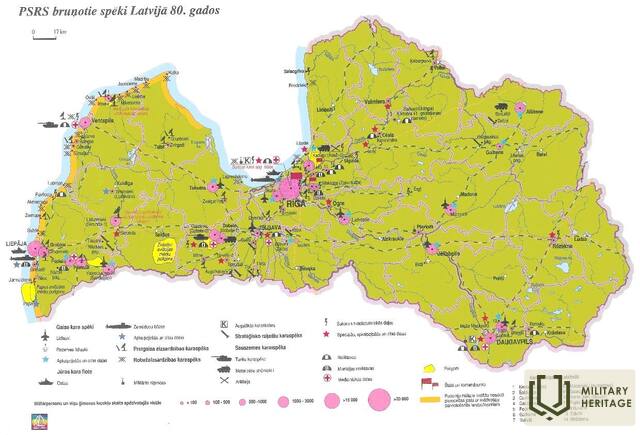


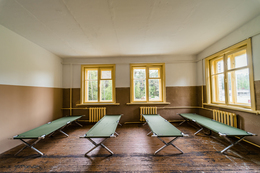
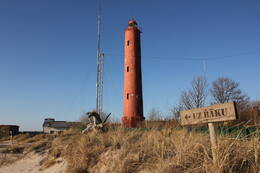
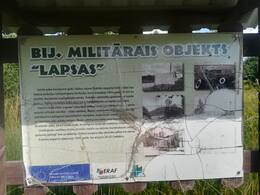


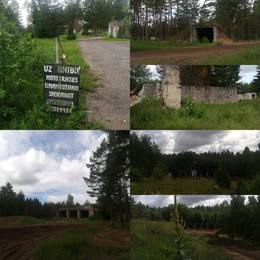

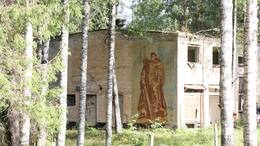
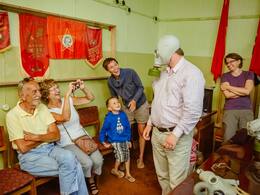
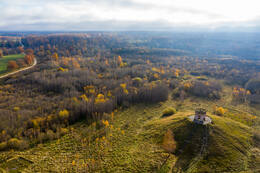
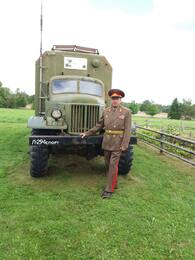

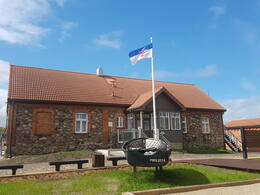
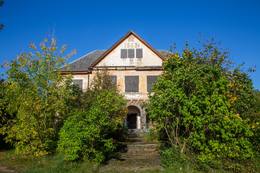
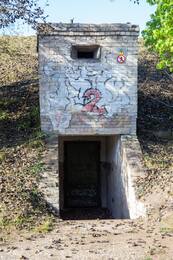
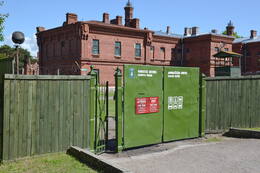
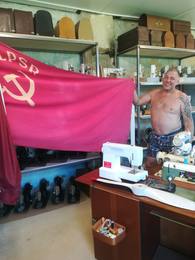
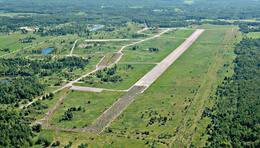
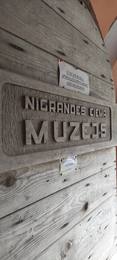
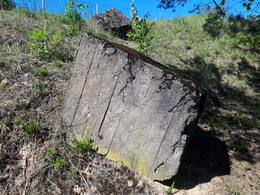
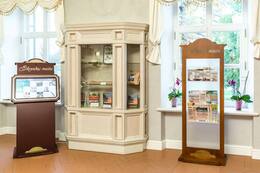
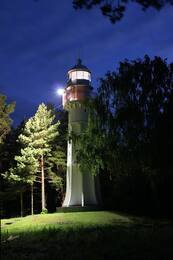
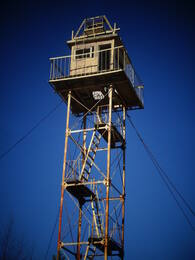
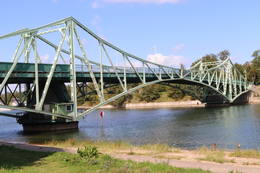
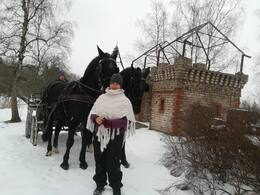


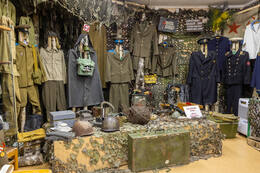
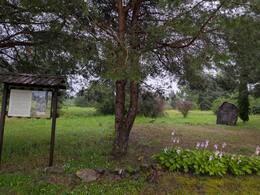

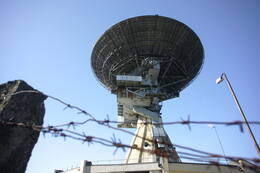
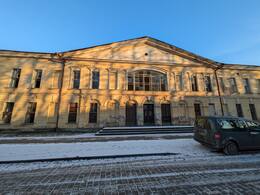
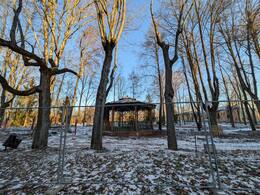

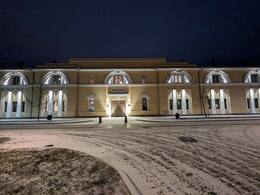
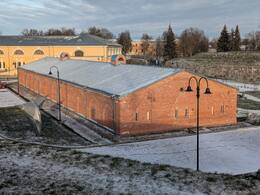
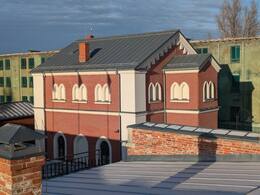
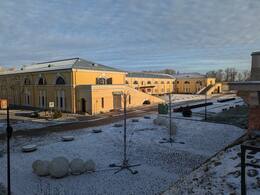
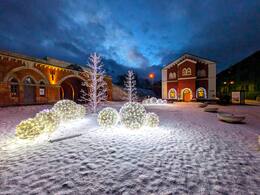
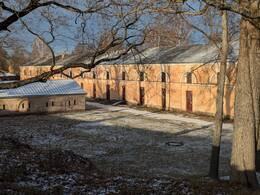

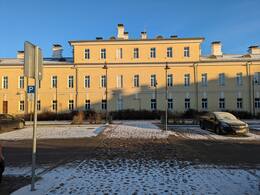
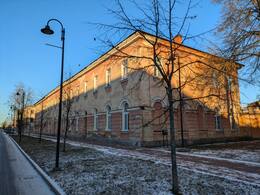
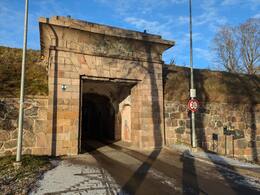
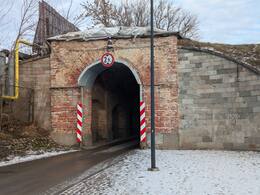
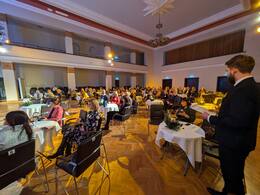
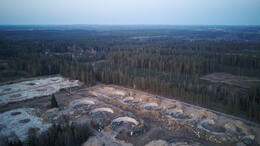
Iš viso Latvijoje buvo dislokuota apie 400 sovietų karių, maždaug 500 objektų, iš viso daugiau nei 50 000 karių. ---------------------------- Kam tas beprasmis skaičius "400 sovietų karių" visomis jūsų svetainės kalbomis???